Hostas are among the most beloved and versatile plants in the world of gardening. With their lush foliage and vibrant colors, these shade-loving perennials can transform any garden into a haven of beauty and tranquility. In this guide, Gina Farm will delve into How to plant Hostas and Care for these wonderful plants.
Introduction to Hostas
Hostas, commonly known as plantain lilies, are popular perennial plants that are prized for their lush foliage and attractive appearance. They are native to East Asia, particularly Japan, China, and Korea, and have become beloved garden plants in many parts of the world. Hostas are known for their versatility, as they can thrive in a variety of garden settings, from shady spots to sun-dappled areas.
Here’s a brief introduction to Hostas:
- Foliage: Hostas are primarily grown for their foliage, which comes in a wide range of sizes, shapes, and colors. The leaves can be heart-shaped, oval, lance-shaped, or even round, and they exhibit various shades of green, blue, yellow, or variegated patterns. The foliage can be smooth or textured, making Hostas a versatile choice for adding texture and color to your garden.
- Flowers: Although Hostas are primarily grown for their foliage, they also produce attractive, often fragrant flowers in late spring to early summer. The flowers are typically tubular or bell-shaped and come in shades of white, lavender, or purple. While the flowers are lovely, they are not the main feature of the plant.
- Size and Growth: Hostas vary in size, with miniature varieties that are just a few inches tall and giant varieties that can reach over three feet in height and spread equally wide. Their growth habit can be clumping or spreading, and they are often used as ground covers or in mixed perennial borders.
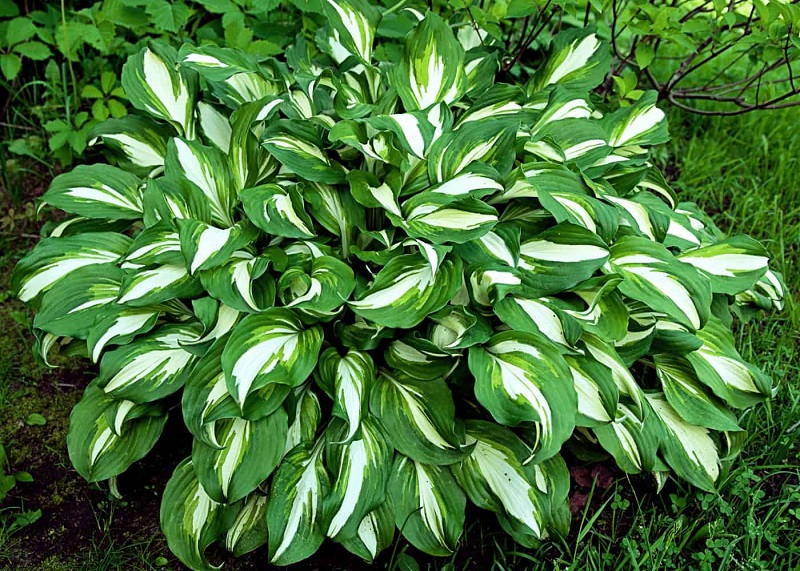
Hostas are beloved by gardeners for their diversity and adaptability, making them a popular choice for enhancing the beauty of gardens and landscapes, especially in areas with limited sunlight. Their enduring popularity has led to the development of numerous cultivars with unique characteristics, making Hostas a dynamic and ever-evolving addition to the world of gardening.
Why Choose Hostas?
Hostas are a popular choice for gardeners for several compelling reasons. Here are some of the key factors that make Hostas an attractive option for both novice and experienced gardeners:
Versatile Foliage
Hostas are primarily known for their lush and diverse foliage. They offer a wide range of leaf shapes, sizes, and colors, including various shades of green, blue, yellow, and variegated patterns. This diverse foliage adds texture, contrast, and visual interest to gardens, making them an excellent choice for ornamental landscaping.
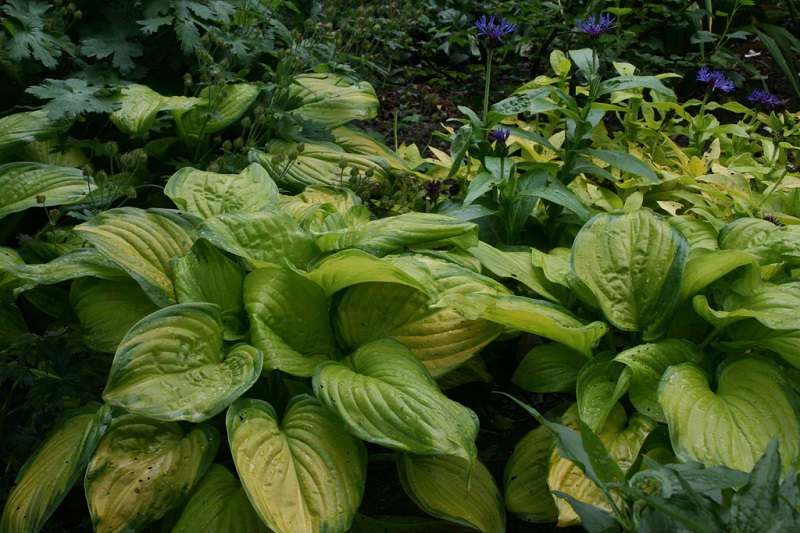
Adaptable to Shade
Hostas thrive in shady or partially shaded locations, which can be challenging for many other plants. Their ability to flourish in low-light conditions makes them an invaluable choice for gardeners who have shaded areas in their landscapes. They can also tolerate some morning sun or dappled light, expanding their utility in various garden settings.
Low Maintenance
Hostas are generally low-maintenance plants. Once established, they require minimal care and attention. Regular watering to keep the soil consistently moist and occasional fertilization are typically all that’s needed. They are also resistant to most pests and diseases, although they can be susceptible to slug and snail damage.
Long-Lasting Perennials
Hostas are perennials, which means they come back year after year without the need for replanting. This longevity makes them a cost-effective choice for gardeners, as you don’t need to purchase new plants annually.
Attractive Flowers
While Hostas are primarily prized for their foliage, they also produce lovely, often fragrant flowers in late spring to early summer. These flowers can add an extra dimension of beauty to your garden, even though the foliage remains the focal point.
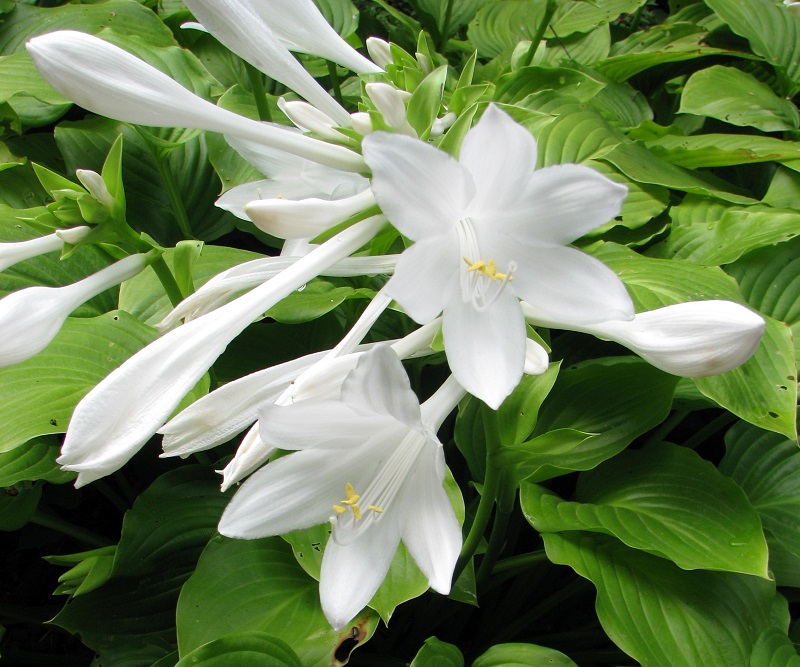
Wide Range of Sizes
Hostas come in a wide range of sizes, from miniature varieties that are just a few inches tall to giant varieties that can reach over three feet in height and spread equally wide. This variety allows you to choose Hostas that suit your garden’s scale and proportions.
Hostas are chosen by gardeners for their adaptability to shade, low maintenance requirements, diverse foliage, long-lasting nature, and the ability to enhance the visual appeal of gardens. Their versatility makes them a valuable addition to various garden styles and landscapes.
How to plant Hostas?
Planting Hostas is a straightforward process, and they can thrive in a variety of garden settings. Here’s a step-by-step guide on how to plant Hostas:
Choose the Right Location
- Hostas thrive in partial to full shade, although some varieties can tolerate more sunlight if they receive adequate moisture. Select a location in your garden that provides the appropriate amount of light for your hosta variety.
- Ensure the soil is well-drained and rich in organic matter. Hostas prefer humus-rich, slightly acidic to neutral soil.
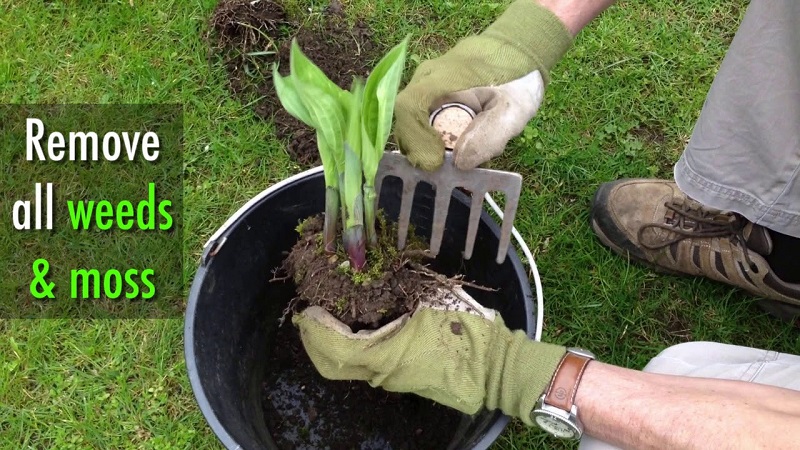
Prepare the Soil
- Clear the planting area of weeds, rocks, and debris. You can use a garden fork or shovel to loosen the soil to a depth of about 12 inches.
- Amend the soil with organic matter, such as compost or well-rotted manure, to improve its texture and fertility.
Dig the Planting Hole
- Dig a hole that is approximately twice the width of the hosta’s root ball and of the same depth.
- If you are planting multiple Hostas, space them according to the recommended distance for your specific hosta variety.
Plant the Hosta
- Remove the hosta from its container or gently loosen it if it’s a bare-root plant. Be careful not to damage the roots or leaves.
- Place the hosta in the center of the planting hole at the same depth it was in its original container or nursery. Make sure the crown of the plant (where the stems meet the roots) is level with the surrounding soil.
- Fill in the hole with soil, gently firming it around the plant to eliminate air pockets. Water the hosta immediately after planting to help settle the soil.

Mulch and Water
- Apply a layer of mulch around the hosta, such as shredded bark or leaf mulch. This helps conserve moisture, suppress weeds, and maintain a consistent soil temperature.
- Water the hosta regularly to keep the soil consistently moist, especially during dry spells. Avoid overwatering, as Hostas do not like soggy soil.
Maintenance
- Hostas are relatively low-maintenance, but they can benefit from an annual application of a balanced, slow-release fertilizer in the spring.
- Monitor for slug and snail damage, which can be common with Hostas. Use natural or chemical deterrents as needed.
- In late spring to early summer, enjoy the attractive flowers that Hostas produce. You can deadhead the spent flowers if you prefer a neater appearance, but it’s not necessary.
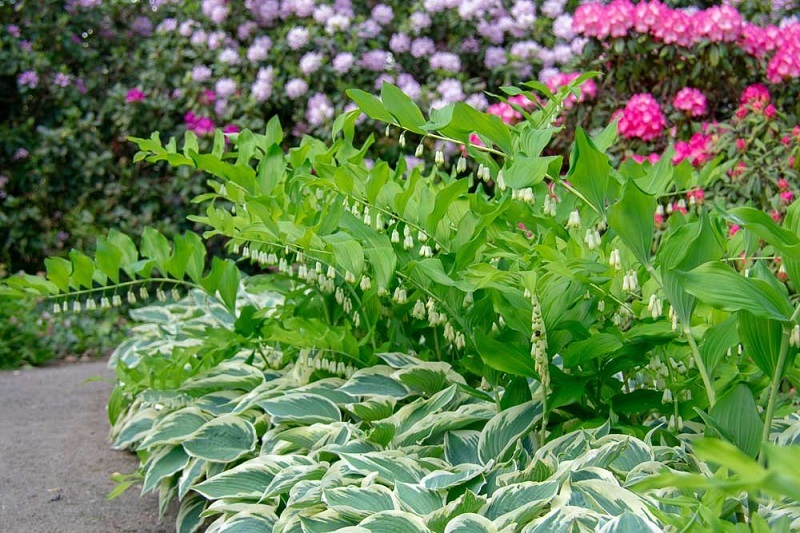
Division
Over time, Hostas can become crowded, resulting in smaller leaves and reduced vigor. To maintain the health and vitality of your Hostas, consider dividing them every few years. Early spring or late summer is the best time for division.
These steps, you can successfully plant and grow Hostas in your garden. Their lush foliage and ease of care make them a popular choice for adding beauty and texture to shaded or partially shaded garden areas.
How to care for Hostas plants?
Caring for Hostas is relatively easy, and with some attention to their specific needs, you can enjoy healthy, vibrant plants in your garden. Here are some essential care guidelines for Hostas:
Watering
- Keep the soil consistently moist, but not waterlogged. Water deeply when the top inch of soil feels dry, which is typically about 1 to 1.5 inches of water per week. Avoid letting the soil dry out completely.
- Use a soaker hose or drip irrigation system to provide even moisture to the root zone. Water early in the day to allow foliage to dry, reducing the risk of fungal diseases.

Mulching
Apply a layer of organic mulch, such as shredded bark or leaf mulch, around the base of Hostas. Mulch helps retain soil moisture, regulates temperature, and suppresses weeds. Keep the mulch a few inches away from the plant’s crown to prevent rot.
Fertilization
Hostas benefit from an annual application of a balanced, slow-release fertilizer in the spring, as new growth emerges. You can also use a granular 10-10-10 or 14-14-14 fertilizer. Follow the manufacturer’s instructions for application rates.
Pest and Disease Management
- Watch for slug and snail damage, which is common with Hostas. Use natural or chemical deterrents, like slug traps, copper barriers, or slug baits, as needed.
- Keep an eye out for signs of other pests, such as aphids, and take appropriate measures to control them if they become a problem.
- Monitor for fungal diseases, such as powdery mildew or crown rot. Adequate spacing, good air circulation, and proper watering can help prevent these issues.
Division
Hostas tend to become crowded over time, which can lead to reduced vigor and smaller leaves. To rejuvenate your Hostas, consider dividing them every few years in early spring or late summer. Gently lift the clump, separate the individual plants, and replant them in different locations.

Pruning
Remove any yellow or brown leaves throughout the growing season to maintain the plant’s appearance and health. You can also cut back the entire plant to ground level after the first frost in the fall, as this helps prevent the buildup of pest and disease problems during winter.
Winter Care
- Hostas are generally hardy, but in colder climates, you can apply a layer of mulch or straw around the base of the plants in late fall to help protect them from frost heaving.
- In areas with heavy snowfall, be cautious when shoveling or plowing snow near Hostas, as the weight of the snow can damage the plants. Gently remove snow to prevent breakage.
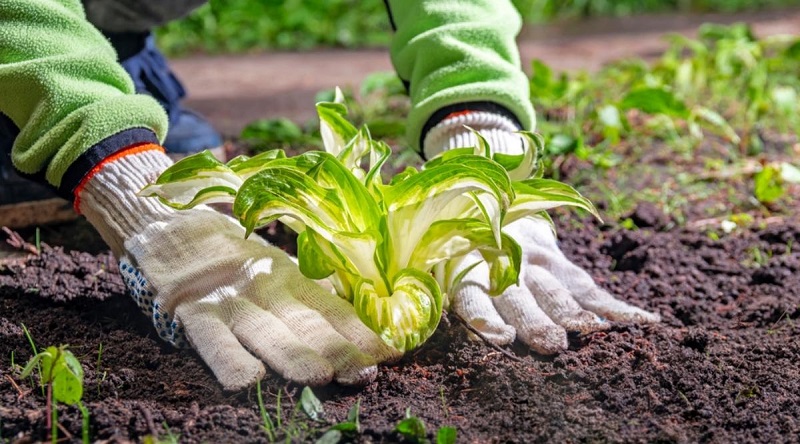
Sunlight and Shade
Hostas are known for their shade tolerance, but some varieties can tolerate more sunlight. If you’re growing Hostas in a sunnier location, make sure they receive enough water to prevent stress from drying out.
By following these care guidelines, you can maintain healthy and attractive Hostas in your garden. With their lush foliage and relatively low-maintenance nature, Hostas are a popular choice for adding texture and color to shaded or partially shaded garden areas.
How fast do Hostas grow?
The growth rate of Hostas can vary depending on several factors, including the hosta variety, environmental conditions, and care practices. In general, Hostas are not particularly fast growers compared to some other plants, but they are known for their longevity and steady development. Here are some key factors that influence the growth rate of Hostas:
Hosta Variety
The growth rate can differ significantly among hosta varieties. Some Hostas are naturally more vigorous and may grow faster than others. Miniature Hostas, for example, tend to be slower growers, while larger varieties may grow more quickly.
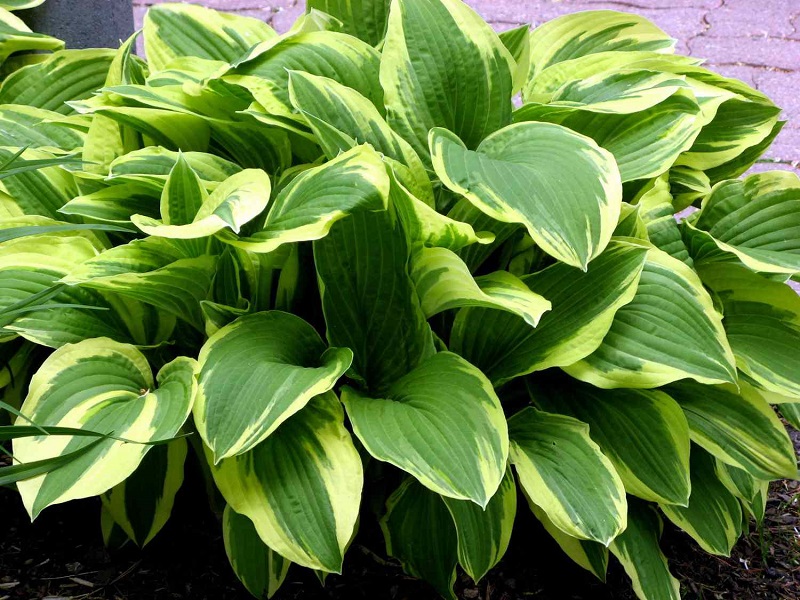
Environmental Conditions
Light, soil, and climate can all impact the growth rate of Hostas:
- Light: Hostas in shadier conditions may grow more slowly than those in areas with more sunlight. While Hostas are shade-tolerant, they generally grow faster with adequate dappled or filtered sunlight.
- Soil: The quality of the soil, its fertility, and drainage can influence growth. Well-amended, humus-rich soil typically supports better growth. Soil that retains consistent moisture is also favorable.
- Climate: Warmer climates may encourage faster growth than cooler or more temperate regions.
Care and Maintenance
Proper care practices, including consistent watering, fertilization, and division, can help accelerate the growth of Hostas. Well-cared-for Hostas are likely to grow faster and produce larger leaves.
Age of the Plant
Young Hostas, especially if recently planted or divided, may exhibit slower growth initially as they establish their root systems. As they mature, they tend to grow more vigorously.
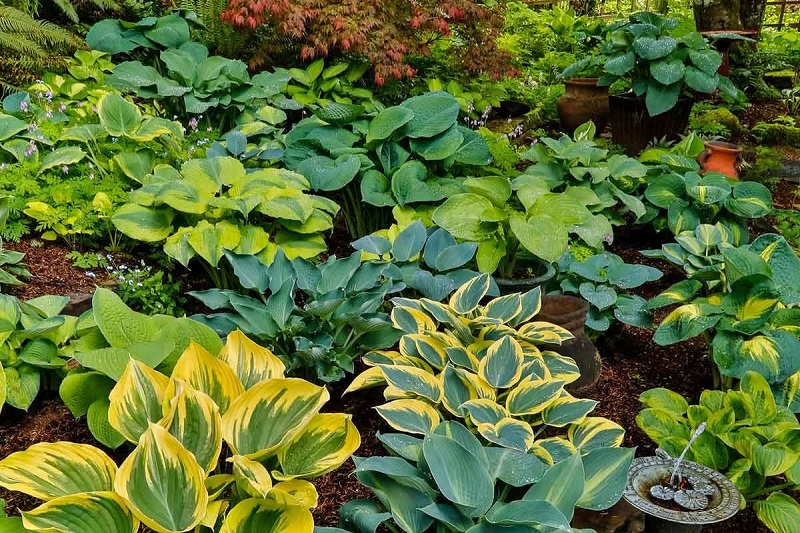
In general, you can expect Hostas to take a few years to reach their mature size. Typically, you’ll notice an increase in size and vigor as the plant matures and establishes itself in its environment. After that initial establishment period, Hostas tend to grow more steadily and slowly, adding a little more each year. Some Hostas may take a decade or more to reach their full mature size, particularly the larger varieties.
In Conclusion
Hostas are exceptional plants that can enhance the beauty of your garden with their attractive foliage and easy care requirements. By following the planting, growing, and caring tips outlined in this guide, you can ensure that your Hostas thrive and become a standout feature in your garden.
Remember that successful gardening with Hostas is a combination of the right location, soil preparation, proper maintenance, and vigilance against potential issues. With how to plant Hostas, you can enjoy the lush and vibrant world of Hostas in your garden for years to come.
